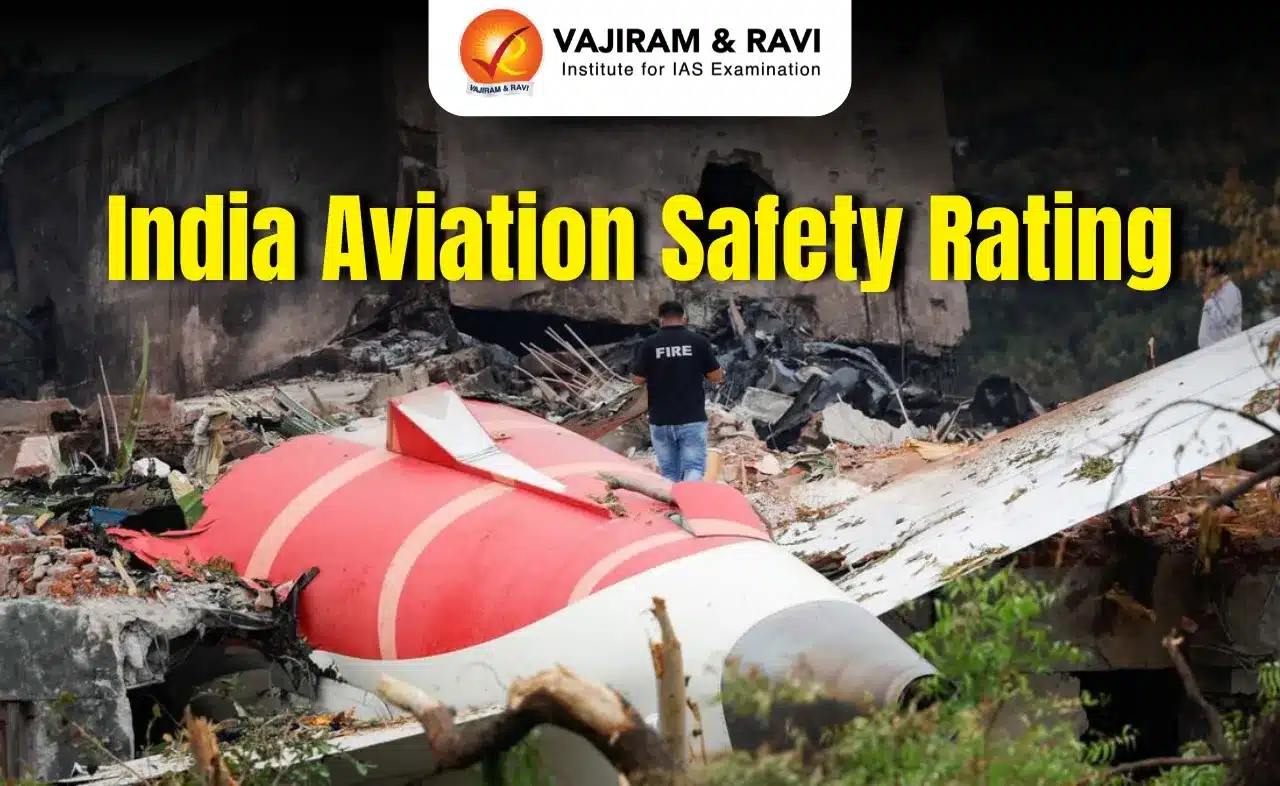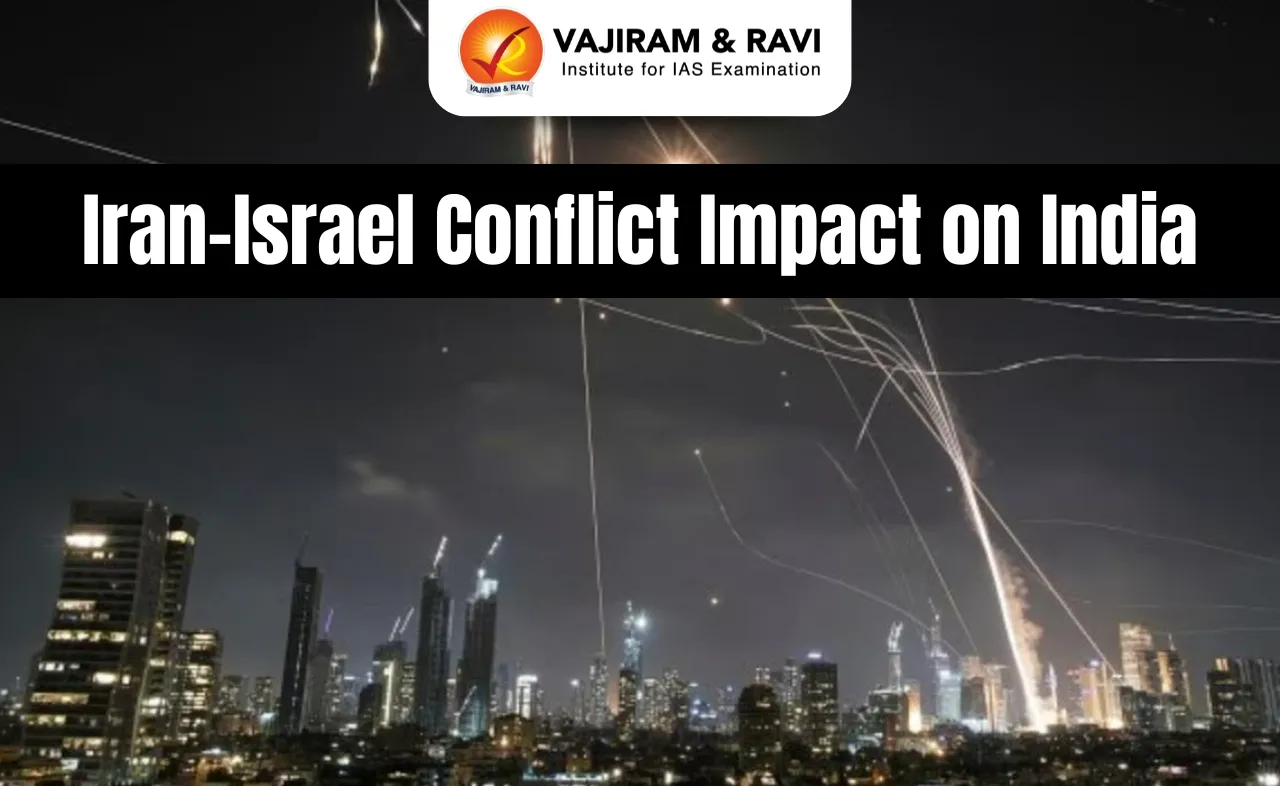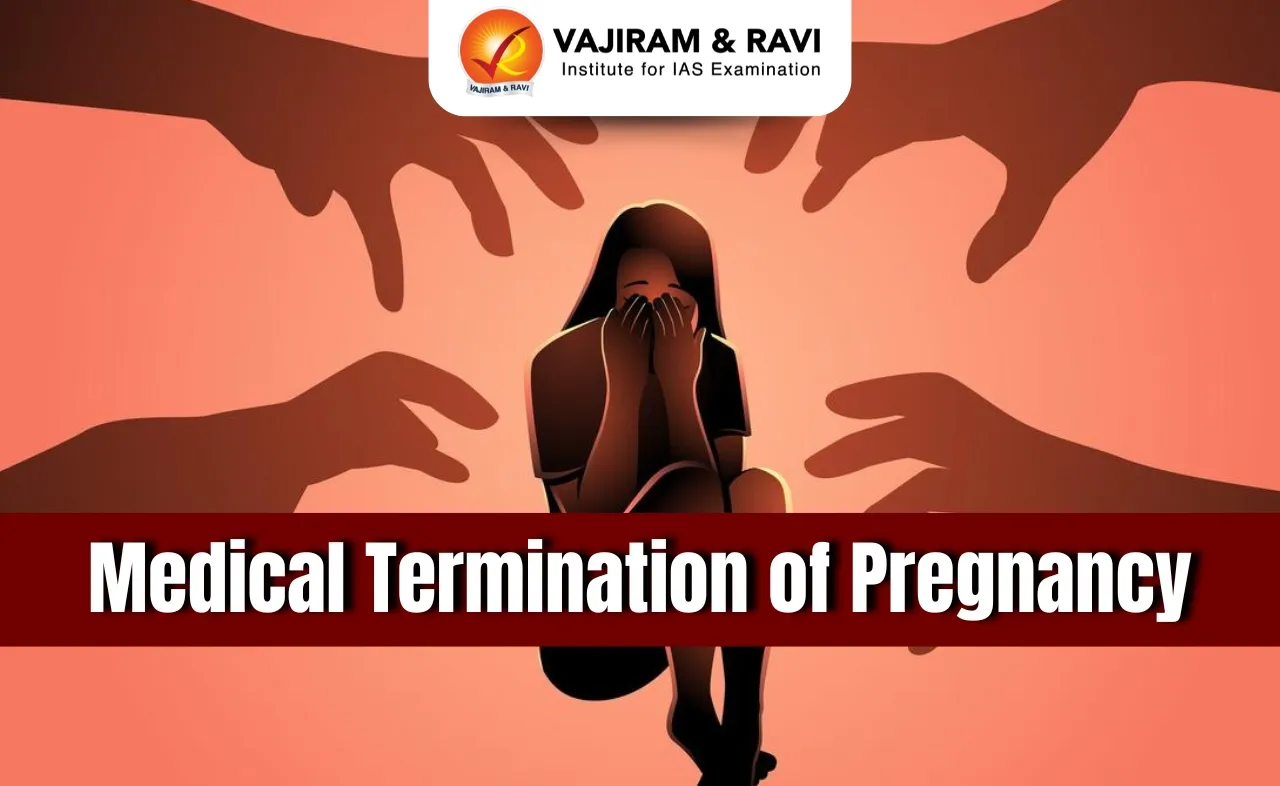India’s Aviation Sector Latest News
- India was rated well above the global average in terms of its operations and airworthiness by the International Civil Aviation Organisation (ICAO) when the Directorate General of Civil Aviation (DGCA) was last audited in November 2022.
Introduction
- In the wake of the tragic Air India AI-171 crash in Ahmedabad that claimed 241 lives, India’s aviation safety record has come under renewed scrutiny.
- However, global aviation watchdogs, the International Civil Aviation Organisation (ICAO) and the United States Federal Aviation Administration (FAA), have reiterated India’s strong performance in airworthiness and operations.
- The ongoing investigation into the accident is being handled in line with international protocols, even as India’s civil aviation safety oversight continues to receive global recognition.
India’s Global Aviation Safety Ranking
- India, currently the third-largest domestic aviation market after the US and China, has shown remarkable progress in civil aviation safety over the last decade.
- The ICAO, a specialised UN agency responsible for global civil aviation standards, audited India’s Directorate General of Civil Aviation (DGCA) in November 2022 under its Universal Safety Oversight Audit Programme (USOAP).
- India received an Effective Implementation (EI) score of 85.65%, significantly up from 69.95% in 2018.
- This placed India well above the global average across all eight audited areas, including legislation, organisation, licensing, operations, airworthiness, accident investigation, air navigation services, and aerodromes.
Performance in Key Parameters
- Two of the most crucial categories under ICAO’s audit, operations and airworthiness, highlighted India’s strong credentials:
- Operations: India scored 94.02%, higher than the global average of 72.28%, and surpassing the US (86.51%) and China (90%) in their respective 2024 audits.
- Airworthiness: India secured 97.06%, well ahead of the US (89.13%) and China (94.83%).
- Such rankings underscore India’s robust regulatory infrastructure in civil aviation, even though the country faces the unique challenges of rapid growth and infrastructure expansion.
FAA’s Category 1 Safety Assessment
- The Federal Aviation Administration (FAA) of the United States, regarded as the foremost global aviation regulator, conducted an audit of the DGCA in October 2021.
- It focused on aircraft operations, airworthiness, and personnel licensing. Following successful compliance, India retained the Category 1 status under the FAA’s International Aviation Safety Assessment (IASA) program.
- In April 2023, the FAA formally informed the DGCA that India continues to meet ICAO’s international safety oversight standards, allowing Indian carriers to operate and expand services to the US and codeshare with American Airlines.
- This recognition was crucial for India’s aviation ambitions and international credibility.
Air India AI-171 Crash and Investigative Response
- On June 13, 2025, Air India flight AI-171 tragically crashed in Ahmedabad, killing all 241 people onboard and causing additional casualties on the ground when it struck a nearby medical college building.
- It was the deadliest Indian aviation accident in more than a decade, bringing global attention to India’s aviation safety mechanisms.
- In response, the Aircraft Accident Investigation Bureau (AAIB) of India initiated a probe aligned with ICAO protocols. Due to the involvement of a US-made Boeing aircraft, the US National Transportation Safety Board (NTSB) joined the investigation.
- The UK’s Air Accidents Investigation Branch (AAIB-UK) is also contributing, given the presence of British citizens among the victims. Aircraft manufacturer Boeing and engine producer GE are also participating, per ICAO guidelines.
Importance of Global Validation
- The ICAO and FAA assessments are more than symbolic recognitions; they are functional validations that determine whether countries can run safe, globally interoperable aviation systems.
- For India, these validations are critical not just for foreign operations and code-sharing, but also for public confidence amidst domestic tragedies.
- Despite the AI-171 crash, India’s comprehensive audit scores, regulatory compliance, and collaboration with global bodies show that isolated incidents must not overshadow overall systemic progress.
- As India expands airport infrastructure, introduces newer aircraft fleets, and scales its regional connectivity schemes, international trust remains a vital currency.
Way Ahead
- India’s aviation regulator faces a dual challenge: managing rapid sectoral growth while ensuring uncompromised safety standards.
- The AI-171 crash is a grave moment that demands full transparency and systemic learning. At the same time, India’s demonstrated adherence to international norms and its high safety ratings position it well for proactive recovery.
- Enhanced training for personnel, adoption of predictive maintenance using AI, and periodic compliance checks could further reinforce India’s aviation ecosystem.
- The key lies in balancing growth with vigilance, and ensuring that air safety remains a top national priority.
Source : IE
India’s Aviation Safety FAQs
Q1: What is India’s current rating by ICAO on airworthiness?
Ans: India scored 97.06% in airworthiness, significantly above the global average.
Q2: What is the FAA's current classification of India’s aviation safety status?
Ans: The US FAA has granted India Category 1 status, indicating compliance with international safety oversight standards.
Q3: Who is investigating the Air India AI-171 crash?
Ans: The Aircraft Accident Investigation Bureau, with support from US NTSB, UK AAIB, Boeing, and GE, is leading the probe under ICAO norms.
Q4: How did India fare in operations audits under ICAO?
Ans: India achieved 94.02% in operations, surpassing both the US and China.
Q5: Why is India’s ICAO Effective Implementation score important?
Ans: It reflects the country’s compliance with global aviation safety standards, influencing international operations and public trust.




